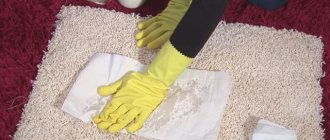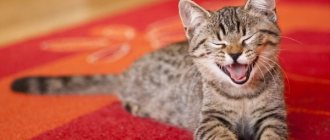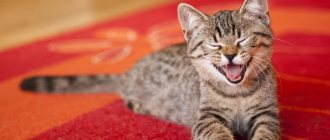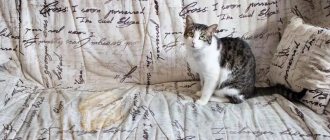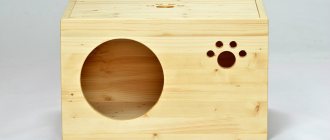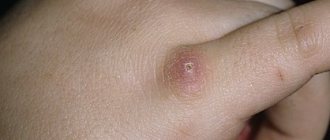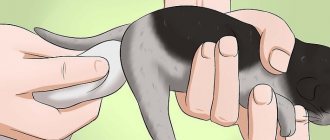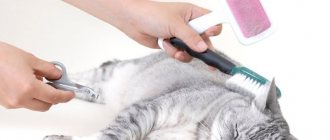All cat owners, especially long-haired breeds, are faced with the problem of cat hair. This is especially felt in autumn and spring, since during these periods seasonal molting occurs, and the handsome man’s fur ends up on carpets, clothes, and his favorite bedspread. There are different ways to help remove cat hair from your home.
What to do if there is wool all over the house
When a furry pet appears in the house, dirt cannot be avoided. To prevent cat hair from accumulating everywhere, it is necessary to remove it as soon as it is discovered. And do a thorough cleaning at least once a day.
A vacuum cleaner will help get rid of cat hair in your apartment. You need to walk not only on the floor, especially in the corners, but also on shelves, furniture, and other surfaces. After vacuuming, a wet wipe must be carried out. Once a week, you need to remove all blankets, bedspreads, rugs, cat bedding, and other attributes where cat hair accumulates most, shake them out, or, better yet, wash them.
You definitely need to comb your cat 1-3 times a day with a special slicker brush (in the form of a comb or mitten); this is done not only during the molting period. Animals usually like such procedures; it becomes a kind of ritual, communication with the pet.
Removable covers
The house in which the pet lives has a special note: fur hairs covering the paths, carpets, sofa and armchairs. When a cat sheds, its fur floats in the air and lands on every surface in its path.
Some practical owners use special covers and blankets for furniture to keep the house clean. They cover sofas and beds in the place where the pet likes to perch. The fabric is cleaned of wool in the washing machine weekly, which helps keep the house and upholstered furniture clean.
Cats are big fans of sheltering in a soft place. A separate pillow or sheet folded several times is prepared for them so that the animal does not spread its fur in other parts of the apartment. Observant owners provide removable and comfortable sun loungers, which are changed or cleaned when dirty. This technique ensures the cleanliness of the apartment from annoying falling hair.
Clean home owners carefully monitor the cleanliness of the coating and resort to washing whenever required.
How to clean furniture from cat hair
Upholstered furniture suffers greatly from cat fluff. While eco-leather can simply be wiped with a damp cloth, fabric surfaces have to be cleaned more thoroughly.
A vacuum cleaner will come to the rescue again. Regular nozzles cannot remove cat hair from a sofa or chair, so it is better to stock up on special ones for removing dirt from furniture. A good solution would be a washing vacuum cleaner. It not only cleans the surface, but also disinfects it.
If there is no vacuum cleaner in the house, then you can deal with cat hair on upholstered furniture using other methods:
- hard sponges and brushes soaked in warm water, possibly adding a small amount of detergent;
- rollers with a sticky surface that can remove and trap hair, dust and other contaminants;
- a piece of nylon fabric, when rubbed, it becomes electrified, attracting hairs to itself.
A simple method of dealing with hair is a damp cloth. Prepare a bowl of water, moisten a napkin, wring it out so that the water does not drain, and rub it over the upholstery, for example, of a chair or armchair. The fluff will roll off, remaining on the napkin.
Animal care during and outside the molting season
In order not to think about how to remove cat hair from various surfaces, and especially not to have to do long cleaning, you need to know how to properly care for the animal. It’s interesting that short-haired pets’ hair falls off, while long-haired pets’ hair falls out in clumps or rolls into clumps (popularly called “tangles”). For animals with long hair, you will need a brush with a steel or chrome coating and brushes made of natural bristles. For pets with short hair, a brush mitt is suitable to remove dead hair.
How to remove wool from a carpet
Cats love to lie on a soft carpet, drying themselves and leaving behind whole clumps of fur. It is not so easy to remove it from soft pile. While a blanket or bedspread can be washed in a machine or run over with a sticky roller, cleaning the carpet using these methods will not work – it will take too long.
And the vacuum cleaner is at work again. It is important to understand which vacuum cleaner is good at removing stubborn cat lint. It is necessary to take equipment with the ability to switch power modes, choose the highest indicator.
To achieve the best effect, you should use a special attachment - a turbo brush. The roller with very stiff bristles rotates in a spiral and can remove even the finest hairs. The only disadvantage of such devices is that they have to be cleaned manually.
If you don’t have a special attachment, then before cleaning the cat’s hair, you should sprinkle a thin layer of baking soda on the most dirty areas. Under the influence of soda, the hairs become soft, they are easier to remove even with an ordinary broom.
Many people prefer to use a robot vacuum cleaner. This is really convenient, but for removing surface dirt. It will not be able to remove the fluff that is embedded between the villi.
Wash
Plasticine and chewing gum are also exotic cleaning agents. Instead of cleaning, they can stick tightly to the fabric and cause many problems. And if plasticine can be removed with alcohol or an organic solvent, then chewing gum will ruin clothes almost hopelessly.
Homemade methods
If you don’t have a special brush or Velcro at home, but you urgently need to clean your favorite sweater or dress. There is an exit! You can make a sticky roller at home with your own hands. For this we will need wide tape and a rolling pin. An excellent option would be double-sided tape. Wrap the rolling pin with adhesive tape so that the smooth side is adjacent to the wooden surface.
Important! The rolling pin must be wrapped completely without leaving any empty areas.
Then we cut off the excess part. The sticky roller is ready! Now we take our device and carefully run it over the fabric with wool, lightly pressing it. If you don't have a rolling pin at home. You can wrap your hand in wide tape and go over your clothes several times in the same way. When the sticky layer stops sticking. Replace it with a new piece of tape, and the procedure can continue.
Preventive measures to prevent lint and hair from getting in
Stores offer special brushes with a soft surface for cleaning things from lint, hair and fur, and antistatic wipes that tend to attract them and clothes will become cleaner.
Expert opinion
Ekaterina Korneva, expert in the field of care, cleanliness and beauty
I will help you understand all the intricacies.
If you don’t have a vacuum cleaner, then rubber household gloves, which we wrote about above, can help remove wool from clothes. To get less pet hair on blankets and other things, you need to do wet cleaning in your apartment more often. General recommendations For any questions, please contact me, I will be happy to answer!
How to remove cat hair from clothes and bedding
Cats are not averse to lying on their owner’s lap or crawling under the side of the bed. Their fur remains invariably in this place, which is especially clearly visible on dark fabric. There are two ways to combat this.
Wash
The easiest way to wash cat hair is to use a washing machine. However, you need to remember that the pile can roll into voluminous balls, which leads to blockages and equipment breakdown. Before washing, it is better to remove visible fluff from linen and clothes, only then load them into the drum.
When washing, use conditioner. It gives antistatic properties to linen; wool will stick to clothes much less. It is better to iron clothes through a thin fabric so that the remaining fibers do not get eaten between the fibers of the fabric.
After washing clothes that are heavily soiled with cat hair, you should clean the washing machine. This can be done manually or using the “drum cleaning” function.
Watch video tips on the process of washing cat fur items:
Remove with a sticky roller
To quickly remove fur and tidy up clothes, it is best to use a roller with a sticky layer. This simple but very convenient device collects not only cat hair, but also small fluff and pellets that are very difficult to remove from the fabric by hand.
There are two types of rollers:
- With a paper base on which a sticky composition is applied. After contamination, the top layer of paper is removed, leaving a new one. Do this until the clothes are completely cleaned.
- Rubber roller. The sticky surface is able to remove all dirt from clothes, holding them well. This roller is designed for reusable use. To clean it, just rinse it under running water and then dry it.
If you don’t have special rollers at hand, you can use wide stationery tape to combat lint. Strips 10-15 cm long are applied to clothing and immediately torn off, leaving all the wool on the sticky layer. If the tape stops sticking, take a clean piece.
Cats love to sleep on freshly washed linen, leaving their fur on it. To prevent this, it is better to immediately put clean bedding and clothes in the closet. To store holiday outfits, you can use special covers, then cat hair will not get on your clothes.
Sticky Helpers
Cat hair annoyingly settles on clothes, beds, and soft seats. You can remove its remnants with lint rollers. This device is inexpensive and quite easy to use. Its disadvantage is that it is quick to use. The rollers run out quickly and their number may not be enough to clean a large area. In this case, wide tape or a roll of self-adhesive paper can be successfully used. The adhesive tape is torn off the roll and placed against areas where wool accumulates: fabric areas or furniture. The tape will easily collect hairs, even those that are invisible at first glance, and will do its job just as well as a vacuum device.
How to clear fur from the air
Cat hair is very light and can remain in the air for a long time without settling on surfaces. Watery eyes, sore nose and throat, chronic bronchitis are just a small list of conditions that can be caused by inhaled hairs if they are not removed in time.
An air purifier will help get rid of fur. It forces air through the filters, trapping dust and tiny lint. The downside of such devices is expensive maintenance. Purchasing and replacing filters costs from 6 to 10 thousand rubles per year.
It is much cheaper to buy a humidifier (costs from 2 thousand rubles depending on the model). Under the influence of microparticles of water that the device sprays, dust and cat hair become heavier, settle down, and the air is purified. To remove all the dirt, it is enough to carry out a wet cleaning and wipe off the dust from the surfaces.
Often at home they use a spray bottle, simply spray water, trying to direct the stream upward. The effect will be the same as with a humidifier.
Check out our guide to choosing an air purifier:
Adhesives and abrasives
- Wet brush or rag. The bristles stick well to a moistened brush. If you don't have one, you can use a regular rag.
- Gloves for cleaning wool from textiles. Special gloves allow you to quickly clean wool from carpets. This lint removal option is very simple. Gloves are put on your hands, then your palms are rubbed several times over the entire surface of the rug. After the procedure, the gloves are washed with running water and dried.
The roller is rolled over the surface of the clothing until the cat hair is completely removed from it. Upon completion, the device is rinsed with warm water. It will not harm the adhesive properties of the cleaning roller.
Folk remedies Recipes for masks At home Hair loss in women How to stimulate growth Causes of hair loss Hair loss in men Review of vitamins Helpful tips
Preventive measures
Shedding is a natural process; if you have a pet, you should be prepared for it. Cats shed most actively in the spring, as they shed the undercoat they grew for the winter. You can and should help the animal by combing it with special combs and brushes 1-3 times a day, bathing it once a week.
Before shedding, your cat can be taken to a groomer. He will trim the pet, and there will be significantly less cat hair in the apartment.
Sometimes an animal loses its fur due to health-related conditions. So, after pregnancy, the cat begins to actively shed due to hormonal changes. Specially selected food for lactating animals, enriched with vitamins and minerals, will improve the situation.
You should be concerned if molting began unexpectedly. This is how an allergy manifests itself when changing food or adding a new product to the diet, but it can also be a signal that the pet is sick. To clarify the situation, you should take the cat to a veterinarian, who will conduct an examination, prescribe treatment, and give recommendations on feeding and caring for the animal.
Causes
First, you should determine why your cat is losing hair and think about whether the negative impact can be eliminated. However, there is no need to panic. If a cat loses a clump of hair, this does not mean that it is dying. The reasons may be different:
Seasonal shedding. Have you noticed that your cat has a lot of hair coming out? What to do? First, take a close look at the calendar. Is your cat not looking sick and hairless, but is actively shedding excess hair? It is likely that she is simply molting. This usually happens twice a year: in autumn and spring. For “apartment” cats that do not go outside, the process may take 2–3 months. There's no need to panic. Instead of the old fur, a new beautiful fur coat will quickly grow.
Dermatitis. It can be allergic and contact. When a cat's fur comes out in clumps and obvious bald patches appear, owners have cause for concern. In the future, bald spots may become covered with scales, turn red and itch. You should immediately see a doctor and determine the cause of the disease. It is likely that this is how the animal reacts to certain foods or new food.
Flea dermatitis. If the resulting bald patches are itchy and covered with crusts and scales, there is reason to suspect a severe reaction to fleas. During this period, the cat’s temperature may rise, and it is very easy to see uninvited “guests” between the hairs.
Skin mite. The disease can be identified by bald paws and muzzle. The hair on the ears also noticeably thins, and throughout the body it becomes dull and unkempt. Self-medication is not enough; you will have to visit a veterinarian.
Lichen. In this case, the hair does not just climb, but falls out in whole pieces. Unsightly bald spots form that quickly increase in size. At the slightest suspicion, you need to show the animal to a doctor as soon as possible.
Stress. A cat can shed heavily in response to new impressions or an unusual environment. The catalyst can be the appearance of other animals in the family, a move, the birth of a baby, the death of the owner, and more.
Avitaminosis. Lack of nutrients, change of feed, seasonal manifestations, lack of certain organic compounds.
Age-related changes. The cat seems to be healthy, but the hair on the ears and face has noticeably thinned out? Your cat is already many years old. In this case, hair loss is associated with poor nutrition of the hair follicles.
Hormonal disbalance. The appearance and thickness of the coat can be affected by pregnancy, estrus, birth and feeding of kittens, and birth control drops and pills that the cat takes.
